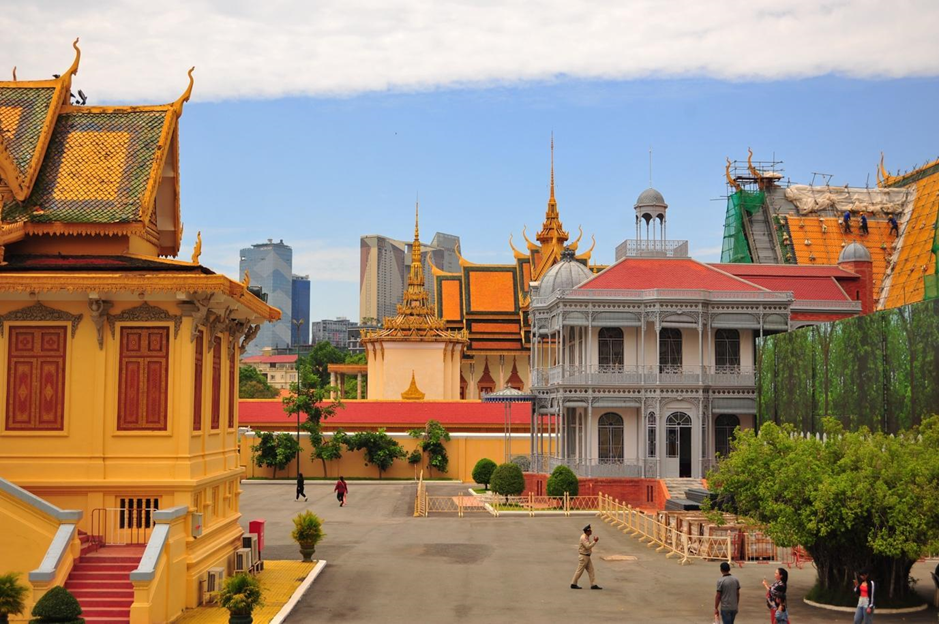Cambodia & Books: ‘Little Brother...’, the journey of a child through war and hope
- Editorial team

- Jul 21
- 3 min read
First published in 1985, Allan Baillie's Little Brother is a poignant children's novel that delicately explores the harrowing realities of life under the Khmer Rouge regime in Cambodia through the eyes of an 11-year-old boy named Muong Vithy.

A story rooted in historical tragedy
Set in the late 1970s, a period marked by the brutal dictatorship of the Khmer Rouge, Little Brother recounts the forced evacuation of cities, the destruction of families and the pervasive atmosphere of fear and loss that characterised Cambodia at the time.
Vithy and his older brother Mang, the last survivors of their family after their parents and sister fell victim to the regime's genocidal policies, embark on a desperate flight to safety. Mang's advice, "follow the lines... to the border," becomes an obsessive motif, symbolising the thin thread of hope that guides Vithy through a landscape marked by violence and abandonment.
The journey of a young refugee
The plot of the novel centres on Vithy's solitary journey to the Thai border after being separated from Mang during an attack. Along the way, he discovers the ruins of Phnom Penh and the ancient temples of Angkor Wat, both described as ghostly remnants of a lost world.
Baillie skilfully balances the dark themes of the story with moments of kindness and resilience, such as Vithy's interactions with strangers who offer him help and his ingenuity in surviving alone. His encounter with the boy nicknamed ‘the King’ in the deserted city and the bartering of gold leaf for help highlight the human connections that persist even in moments of despair.
Themes of loss, courage, and hope
Little Brother highlights the devastating effects of war on civilians, particularly children. Vithy's experiences embody the loss of family, home, and security suffered by countless refugees. The novel also addresses the loss of possessions and identity, as evidenced by the transformation and abandonment of Phnom Penh, where a young boy takes on the role of ‘king’ of a city emptied by conflict.
Despite these hardships, Baillie's story is imbued with themes of courage and hope. Vithy's determination to find Mang and his final journey to Australia, where he is reunited with his brother, offer a hopeful conclusion that highlights the resilience of the human spirit.
An accessible introduction to the experiences of refugees
Baillie's novel is an important educational tool, introducing young readers to the concept of refugees and the reasons that drive people into exile, without resorting to graphic descriptions of violence. This approach allows children to identify with the story while raising their awareness of global issues related to war and displacement.
The book's relatively moderate narrative, compared to other refugee stories, makes it suitable for late primary and early secondary school readers, providing an entry point for understanding complex historical and humanitarian issues.
Literary and cultural significance
Little Brother stands out not only for its subject matter, but also for its narrative style and character development. Baillie's portrayal of Vithy is both believable and captivating, capturing the innocence and resilience of a child caught up in extraordinary circumstances.
The novel's 144 pages, illustrated by Elizabeth Honey, combine to create a vivid yet sensitive portrayal of a dark chapter in history through the eyes of a child. The story's enduring relevance is reflected in its continued use in educational settings and its role in broadening the debate on refugees and war in children's literature.
Allan Baillie's Little Brother remains an important contribution to children's literature, offering a sincere and accessible window into the Cambodian genocide and the refugee experience. Through the journey of young Vithy, readers are invited to discover the profound cost of war, but also the enduring power of hope, courage and human kindness.







Comments